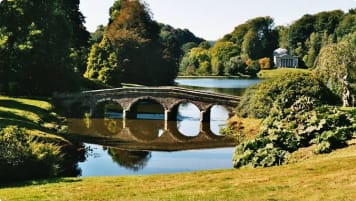Discover West Africa: Ghana, Togo, Benin, and More
The Story of West Africa West Africa consists of the modern nations of Benin, Burkina Faso, Cape Verde, Côte d’Ivoire, The Gambia, Ghana, Guinea, Guinea-Bissau, Liberia, Mali, Mauritania, Niger, Nigeria, Senegal, Sierra Leone, and Togo.…
25 Jul 25 · 8 mins read
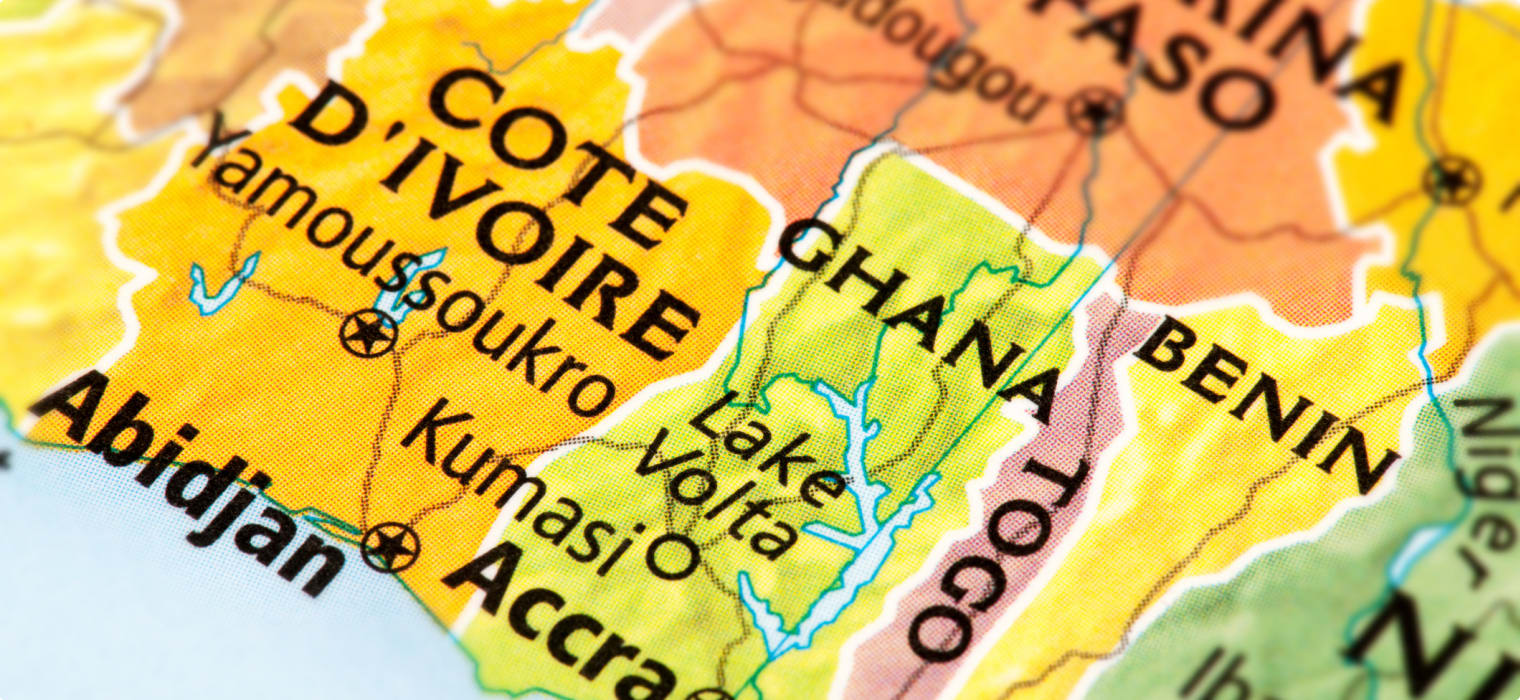
The Story of West Africa
West Africa consists of the modern nations of Benin, Burkina Faso, Cape Verde, Côte d’Ivoire, The Gambia, Ghana, Guinea, Guinea-Bissau, Liberia, Mali, Mauritania, Niger, Nigeria, Senegal, Sierra Leone, and Togo. Across the region is a story of resilience, complexity, and extraordinary cultural richness.
Long before European ships arrived on its coasts, the region was home to powerful kingdoms, vibrant trade routes, and spiritual traditions that still shape daily life today. From the gold-laden corridors of the ancient Ghana Empire to the sacred festivals of the Ashanti, the legacy of precolonial statecraft and culture remains particuarly deeply embedded in the landscapes of Ghana, Togo, and Benin.
This article traces the layered histories of these three West African nations. It explores their early civilisations, encounters with European powers, struggles under colonisation, and paths to independence. Alongside the historical narrative, it highlights the living heritage visible in today’s festivals, spiritual practices, and cultural sites. Whether it’s the haunting dungeons of Cape Coast Castle, the rhythmic energy of a voodoo ceremony in Benin, or the intricate artistry of Togo’s markets, Western Africa offers a compelling window into both the past and the present.
The article is intended as background reading for Odyssey Traveller’s 21-day Explore the History, Culture & Wildlife of West Africa: Ghana, Togo & Benin Tour for mature and senior travellers. This small group tour concentrates on the history, culture and wildlife of coastal Central Africa. Meet the friendly local people and come to a greater understanding of just what has made them what they are today.
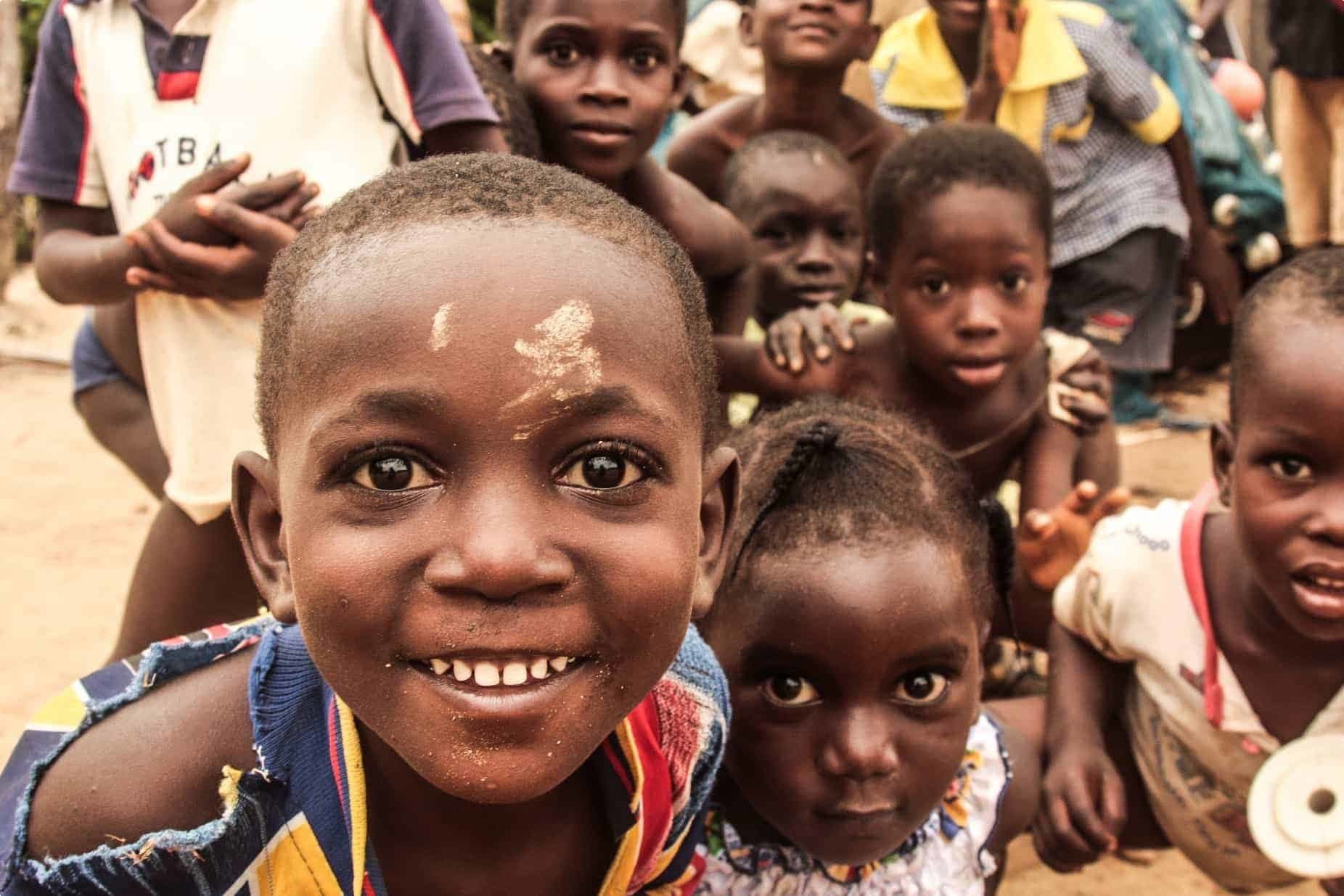
Early History and Precolonial Kingdoms
West Africa’s early history is marked by powerful empires, vibrant trade networks, and diverse cultural traditions. The ancient Ghana Empire was one of the earliest great West African states. Founded around the 4th century by the Soninke Indigenous peoples, it was situated north of modern Ghana in parts of present-day Mauritania, Senegal, and Mali. It thrived through control of trans-Saharan trade routes before declining in the 13th century and being absorbed into the Mali Empire.
In the forests and savannahs of what is now Ghana, powerful Akan-speaking states began to form from at least the 13th century onward. These included Denkyira, Akyem, and the early foundations of the Ashanti kingdom. In the north, groups such as the Mamprussi, Dagomba, and Gonja also established kingdoms with hierarchical leadership and complex oral traditions.
To the east, in the area of present-day Togo, diverse groups such as the Ewe and Kabye formed decentralised communities. While no large empire emerged, these societies were active in inland trade networks and maintained distinct political and spiritual systems.
Further east, the region had long been inhabited by organised communities engaged in regional power dynamics. These would be the roots of the centralised Kingdom of Dahomey in what is now southern Benin, which began to take shape by the 17th century.

European Contact and Trade (15th–19th Century)
From the 15th century, European powers including the Portuguese, Dutch, British, French, and Danes established trading posts along the West African coast, drawn by the region’s wealth in gold, ivory, and enslaved people. This marked the beginning of a centuries-long period of profound economic and social upheaval across the region.
In what is now Ghana, the arrival of the Portuguese in 1471 ushered in an era of gold trade, leading to the region being called the Gold Coast. Forts such as Elmina Castle (built in 1482) and Cape Coast Castle were constructed to control this trade. Over time, however, the trade in enslaved Africans overtook gold as the main export. By the 17th and 18th centuries, the transatlantic slave trade had become deeply entrenched, with millions of Africans held in coastal dungeons before being shipped across the Atlantic. Despite these pressures, inland kingdoms such as the Asante fiercely resisted European domination, maintaining independence through much of the 19th century.
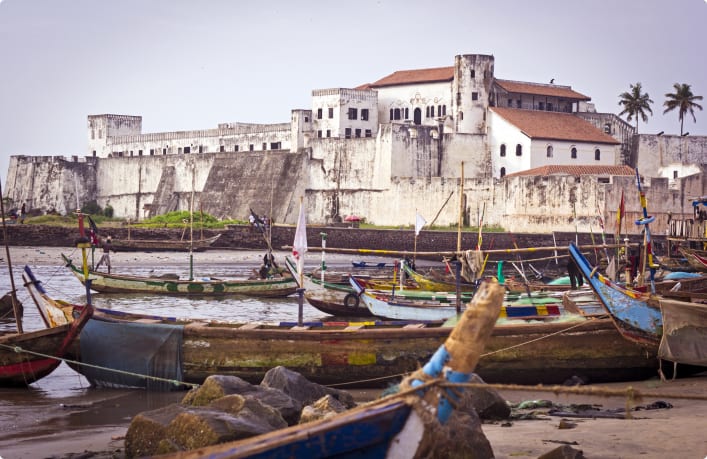
East of Ghana, the coasts of present-day Togo and Benin formed part of what European traders termed the Slave Coast. The Kingdom of Dahomey in southern Benin rose to prominence as a major supplier in the slave trade. It developed a centralised, militarised state under kings such as Tegbesu and Gezu, known for their female warriors and highly organised administration. The port city of Ouidah became a key hub for slave exportation. In nearby Togo, towns like Little Popo (modern Aného) also became major trading centres, with local conflicts feeding the capture and sale of captives to European merchants.
While the transatlantic slave trade devastated many communities and reshaped the region’s political landscape, it also spurred resistance and cultural resilience. West African traditions such as Vodun in Benin and Togo played a central role in sustaining identity under external pressure. These traditions continue to be celebrated today.
Colonisation (Late 19th – Early 20th Century)
By the late 19th century, West Africa was engulfed by the European imperial push known as the Scramble for Africa, leading to the formal colonisation of Ghana (the Gold Coast), Togo, and Benin (Dahomey).
Britain gradually expanded its control over the Gold Coast through the 19th century, culminating in the annexation of the powerful Ashanti Kingdom in 1901 after a series of conflicts. The territory became a crown colony, and British administrators introduced cash-crop agriculture, especially cocoa, and built railways to connect inland regions with coastal ports. British colonialism also brought Christian missions and Western education, reshaping local institutions and belief systems.
Germany established Togoland as a protectorate in 1884, developing infrastructure such as railways and plantations while imposing harsh forced labour regimes. After Germany’s defeat in World War I, the colony was divided between Britain and France. British Togoland was later incorporated into Ghana, while French Togoland became the Republic of Togo. Both colonial administrations maintained exploitative systems, but French rule in particular left a lasting imprint on governance, language, and education.
French colonisation of Dahomey followed violent clashes with the powerful Kingdom of Dahomey in the 1890s. After military defeat, the kingdom was absorbed into French West Africa. The French imposed new systems of taxation, education, and administration, often enforced through coercion. Infrastructure such as railways and ports, like the one at Cotonou, was developed primarily to serve French economic interests. Despite colonial suppression, local cultural traditions and identities endured beneath the surface of imposed rule.

Independence and Modern Nationhood
Ghana gained independence from Britain in 1957, becoming the first sub-Saharan African country to do so. Led by Kwame Nkrumah, a leading voice in Pan-Africanism, Ghana inspired independence movements across Africa. However, the post-independence period saw political instability, including coups and military rule. A return to democracy began in the 1990s, and Ghana is now widely regarded as one of the most stable and democratic West African governmnets, with a vibrant civil society and peaceful elections.

Togo became independent from France in 1960, with Sylvanus Olympio as its first president. His assassination in a 1963 coup ushered in decades of authoritarian rule under Gnassingbé Eyadéma, who ruled until his death in 2005. His son, Faure Gnassingbé, then succeeded him, continuing the family’s rule. Despite periods of political unrest and contested elections, Togo has experienced some economic growth, especially in agriculture, and efforts at reform continue.
After independence from France in 1960, Benin (still then Dahomey) underwent a turbulent period with multiple military coups. In 1975, the country was renamed the People’s Republic of Benin under a Marxist-Leninist regime. By the early 1990s, however, facing internal pressure and shifting global politics, Benin transitioned peacefully to democracy. A national conference led to a new constitution and multiparty elections, making Bening a pioneer of democratic reform in Africa. Since then, it has maintained a relatively stable multiparty system and is often cited as a model of democratic transition in the region.
Highlights of West Africa
Ghana, with a population of around 25 million, is one of West Africa’s most stable democracies. Its economy has long been driven by gold and cocoa, with oil becoming an increasingly important resource in recent years. Travellers to Ghana can explore a wide range of attractions, from centuries-old coastal fortifications and lively urban centres to national parks and traditional festivals. In the town of Nungua, imaginative and elaborately crafted coffins offer a unique insight into Ghanaian funerary traditions. Shaped like animals, cars, or even soda bottles, these coffins reflect the lives and personalities of the deceased. In Kumasi, the historic heart of the Ashanti kingdom, the Akwasidae festival provides a vibrant display of royal regalia, drumming, and community gathering.
In neighbouring Benin, voodoo plays a central role in cultural life. Far from the dark portrayals seen in popular media, voodoo here is a respected spiritual practice followed by a large portion of the population, with elements often blended into Christian and Muslim traditions. Visitors interested in nature can also explore Pendjari National Park, one of West Africa’s premier wildlife reserves, where elephants, lions, leopards, and cheetahs roam freely.
Togo, narrowly nestled between Ghana and Benin, offers an impressive range of landscapes and cultural experiences for its size. In the capital city of Lomé, the National Museum offers insights into the West African country’s artistic heritage and colonial past, while the bustling Grand Market is a great place to shop for traditional crafts, textiles, and local goods.

Tour of West Africa: Ghana, Togo & Benin
Odyssey Traveller visits West Africa on our 21-day Explore the History, Culture & Wildlife of West Africa: Ghana, Togo & Benin Tour. During the tour, we explore the region’s natural beauty, its ancient heritage, World Heritage Sites, and famous cities, all with some truly spectacular scenery along the way.
This small group tour to Central West Africa has been specially designed for the mature traveller – those with a sense of adventure and a desire to explore this exciting but infrequently visited region. Ghana, Togo and Benin may be off the usual tourist route, but each has much to offer the discerning visitor. Our tour concentrates on the history, culture and wildlife of these African countries. Meet the friendly local people and come to a greater understanding of just what has made them what they are today.
Highlights include:
- Observing and learning about the sacred Voodoo shrines side by side with a Roman Catholic Cathedral.
- Gaining an insight into the slave trade at Cape Coast Castle.
- Enjoying spotting unique indigenous wildlife in Mole National Park.
- Visiting the Batammariba people and learn about the design history of the mud tower houses
Odyssey Traveller has been serving global travellers since 1983 with educational tours of the history, culture, and architecture of our destinations designed for mature and senior travellers. We specialise in offering small group tours partnering with a local tour guide at each destination to provide a relaxed and comfortable pace and atmosphere that sets us apart from larger tour groups. Tours consist of small groups of between 6 and 12 people and are cost inclusive of all entrances, tipping and majority of meals. For more information, click here, and head to this page to make a booking.
Articles about Africa published by Odyssey Traveller:
- The Portuguese in Africa
- Discover Central and West Africa: Ghana, Togo, Benin and more
- Exploring South Africa: The Definitive Guide for Travellers
- Madagascar’s Fascinating History
- Questions About Egypt for Senior Travellers
- West African Gold and Empires
For all the articles Odyssey Traveller has published for mature aged and senior travellers, click through on this link.
External articles to assist you on your visit to West Africa:
Related Tours
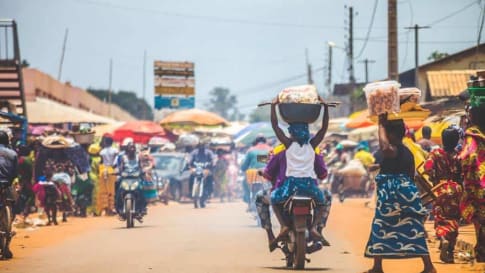
21 days
Sep, MayExplore the History, Culture & Wildlife of West Africa: Ghana, Togo & Benin
Visiting Benin, Ghana
This small group tour for couples and solo travelers concentrates on the history, culture and wildlife of coastal Central Africa. Meet the friendly local people and come to a greater understanding of just what has made them what they are today.
From A$15,745 AUD
View Tour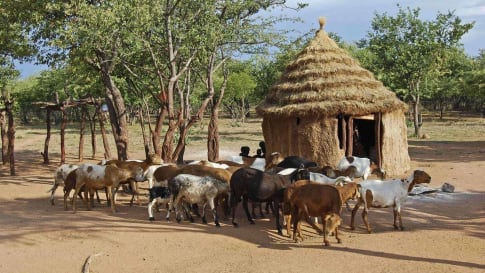
19 days
AugSouthern Africa Tour | Fully Escorted Africa Tour for Seniors
Visiting Botswana, South Africa
Join us for an unforgettable small group tour designed for couples and solo travelers, where you’ll explore the stunning landscapes of the Garden Route and encounter the unique wildlife of renowned destinations like Kruger National Park, Cape Town, Victoria Falls, and Chobe Game Reserve. Throughout the program, participants will delve into the rich cultural tapestry, political landscape, and social challenges faced by the people of South Africa, particularly in Soweto. Additionally, you'll gain insights into how natural resource managers are dedicated to protecting wildlife reserves amid the pressing issues of land enclosure, climate change, and poaching.
From A$14,995 AUD
View Tour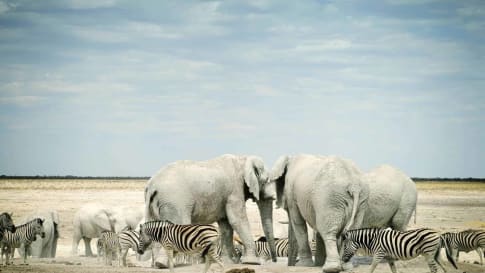
10 days
SepNamibia Wildlife and Culture Tour for Seniors
Visiting Namibia
A small group tour for seniors and couples to Southern Africa for couples and solo travellers. Namibia shares borders with Angola and Zambia to the north, Botswana to the east and South Africa to the south and east. Wedged between the Kalahari and the South Atlantic, Namibia is home to the oldest desert of the earth. Despite its parched reputation, Namibia is one of the world’s best wildlife destinations.
From A$14,685 AUD
View Tour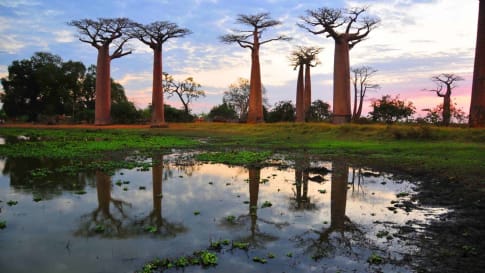
16 days
Sep, AprMadagascar Small Group Tour | The island of Lemurs & Avenue of Baobabs
Visiting Madagascar
On this small group tour we explore the country’s natural wonders as well as its colonial past. Madagascar has a range of extraordinary plant and animal life which we will have the chance to view in the island’s National Parks and Nature Reserves. While on the tour we will also learn about both the Portuguese and French periods of control.
From A$14,995 AUD
View Tour
